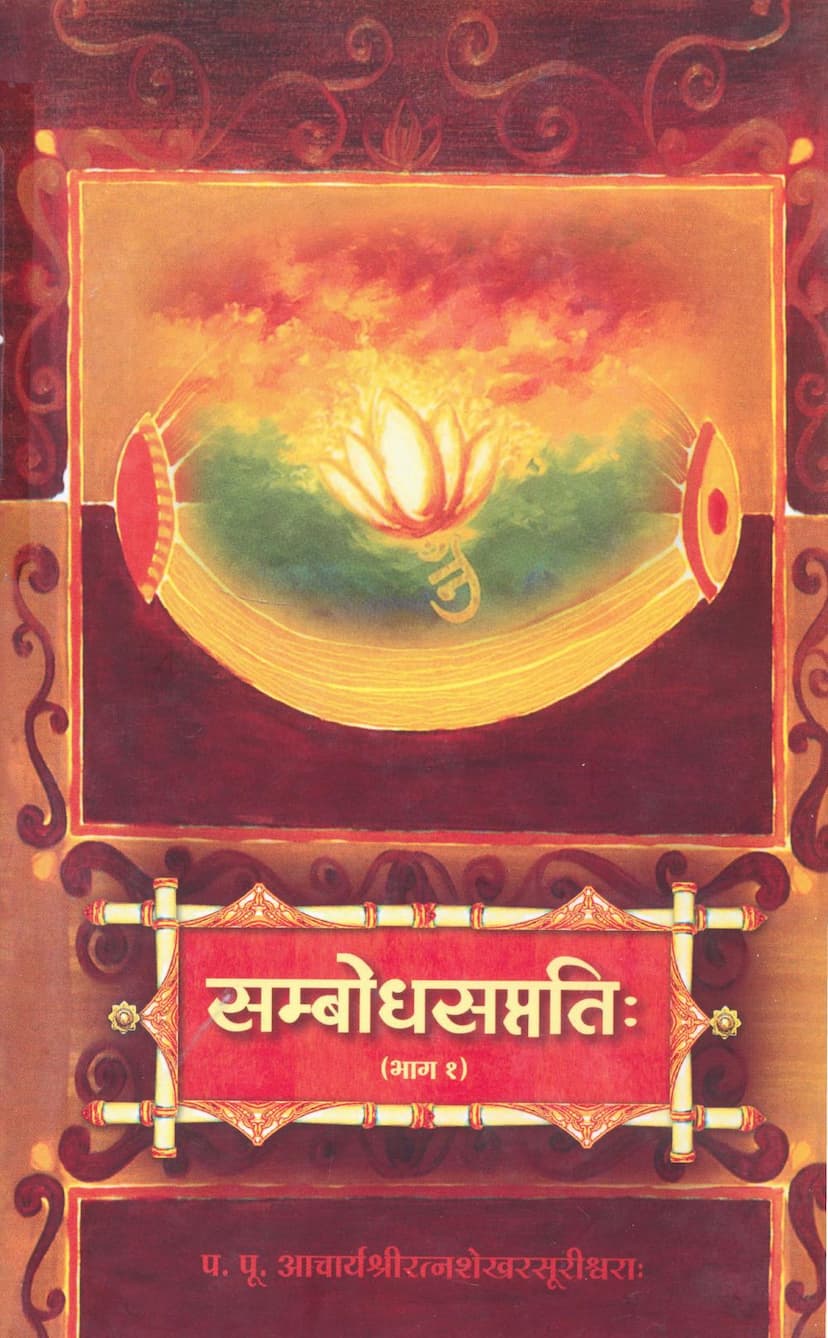Sambodh Saptati Part 01
Added to library: September 2, 2025

Summary
Here's a comprehensive summary of the Jain text "Sambodh Saptati Part 01":
Book Title: Sambodh Saptati (Part 1) Author(s): Pt. P.P. Acharya Shri Ratnashekharsuriśvaraḥ (Original text); Pt. P.P. Acharya Shri Vijay Kalyanbodhisuriśvaraḥ (Revision, Gujarati Commentary, Editing) Publisher: Shri Jinshasan Aradhana Trust Catalog Link: https://jainqq.org/explore/022078/1
Overview:
"Sambodh Saptati" (the Seventy Verses of Awakening) is a significant Jain text compiled by Acharya Ratnashekharsuri (also known as Jayasekharasuri). This edition, the first part of the compilation, features the original Prakrit verses (75 gathas), a classical Sanskrit commentary by Vachacharya Shri Gunavinayaji, and a newly crafted Gujarati commentary titled "Sambodhopanishad" by Acharya Shri Vijay Kalyanbodhisuri. The work draws extensively from ancient Jain scriptures and the teachings of revered acharyas like Acharya Shri Haribhadrasuri.
Core Theme and Purpose:
The central theme of "Sambodh Saptati" is awakening (Sambodh). The text aims to rouse the soul from its eternal slumber of delusion (moha-nidra). It emphasizes that true awakening is not merely intellectual understanding but a profound inner realization that leads to detachment and spiritual progress. The author asserts that even a few impactful verses can illuminate the path to liberation, akin to a single lamp dispelling darkness.
Content Highlights (Based on the provided pages):
The text is structured around 75 verses, each offering profound spiritual insights. The summary below is based on the initial pages and the table of contents provided:
-
Invocation and Author's Intent: The work begins with invocations to Lord Mahavir and other revered figures in Jainism, establishing its spiritual foundation. The author, Acharya Ratnashekharsuri, clearly states his intention to compile "Uddhar Gathas" – verses drawn from established scriptures and the works of earlier acharyas, demonstrating the value of collection and preservation of profound teachings.
-
The Essence of Awakening: The introductory pages highlight that the ultimate goal of all scriptures is the awakening of the soul. It draws a parallel to a person sleeping in a burning house, emphasizing the urgency of waking up. The text aims to shake off the slumber of delusion.
-
Scope and Significance: "Sambodh Saptati" is described as a "Gagarma Sagar" (ocean in a pot) or "short and sweet," containing a vast array of subjects within its 75 verses. It is considered useful for all levels of seekers, from beginners to scholars.
-
Commentaries and Scholarship: The presence of a classical Sanskrit commentary and a modern Gujarati commentary ("Sambodhopanishad") signifies the text's importance and the effort to make its wisdom accessible through different eras and linguistic mediums. The Gujarati commentary is noted for its clarity, detailed explanations, and inclusion of scriptural references.
-
Key Topics Covered (from the Table of Contents):
- Exposition of Truth: The nature of equanimity (Samata) and the essence of deities (Devatva) are discussed.
- Devotion and Reverence: Verses cover the importance of revering Jinendras (Tirthankaras), the qualities of deities, gurus, and virtuous monks (Sadhus). The text elaborates on the spiritual significance of paying homage to them.
- Core Jain Principles: Essential concepts like Ahimsa (non-violence) as the foundation of all religions, the rarity of right faith (Samkit), and the path to celestial realms are explored.
- Spiritual Practices: The value and efficacy of practices like Samayika (meditation) and the fruits of observing various vows and ethical conduct (Sheel) are detailed.
- The Sangha and its Members: The text defines the true nature of the Sangha (community of monks and nuns) and differentiates between those who truly embody Jain principles and those who merely wear the outward symbols. It addresses the qualifications of monks and nuns, including their conduct, vows, and renunciations.
- The Importance of Knowledge and Discipline: The text stresses the necessity of scriptural knowledge (Agam) and strict adherence to the teachings of the Tirthankaras. It highlights the pitfalls of deviating from the prescribed path and the importance of righteous conduct.
- The Dangers of Wrong Association: The text warns against associating with those who are ignorant of scriptures (Ageetarth) or who transgress vows (Kushil). It uses allegorical examples, like the mango tree influenced by the neem tree, to illustrate the detrimental effects of bad company.
- The Supreme Value of Right Conduct (Sheel): The text elevates Sheel (virtuous conduct and chastity) above other religious practices, emphasizing its supreme importance.
- The Power of Right Faith (Samkit): The rarity and profound significance of Samkit (right faith) are highlighted, explaining its role in attaining celestial happiness and liberation.
- The Role of the Guru: The indispensable role of a qualified Guru in spiritual guidance is underscored.
- The Dangers of Delusion (Mithya Tva): The text meticulously describes the various forms of false beliefs (Mithya Tva) and warns against them, portraying them as the greatest obstacles to spiritual progress.
- The Importance of Adherence to Ajna (Divine Command): A recurring theme is the necessity of following the commands of the Tirthankaras. Actions performed without divine sanction are deemed fruitless and even detrimental.
- The Distinction Between Material and Spiritual Devotion: The text differentiates between ritualistic worship (Dravya Stava) and internal devotion (Bhava Stava), highlighting the superior impact of the latter in achieving liberation.
- The True Nature of a Sangha: The text defines a true Sangha as those who are united in their adherence to the Tirthankaras' commands, not just by outward appearance.
Compilation and Editing:
Acharya Shri Vijay Kalyanbodhisuriśvaraḥ is credited with the diligent work of researching the original text from six manuscript copies, compiling the Gujarati commentary, and editing the entire work. His dedication to reviving and presenting these ancient teachings is evident.
Overall Message:
"Sambodh Saptati" serves as a guide to spiritual awakening, urging readers to shed ignorance and delusion. It underscores the importance of right faith, right knowledge, and right conduct, all guided by the divine commands of the Tirthankaras. The text offers practical wisdom and moral instruction, encouraging virtuous living and the pursuit of liberation through the diligent practice of Jain principles.